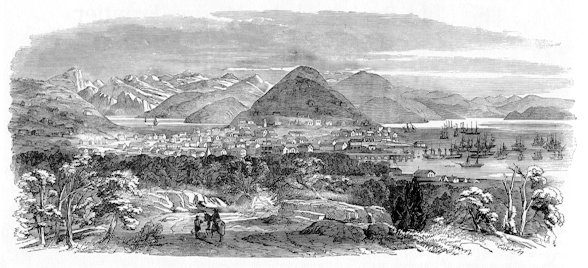A Steamboat in San Francisco Bay
Today, we meet a harbinger of the modern West. The University of Houston's College of Engineering presents this series about the machines that make our civilization run, and the people whose ingenuity created them.
In January, 1847, during the Mexican-American War, Captain John Montgomery planted an American flag on a California peninsula. He renamed it San Francisco. That October, a boat showed up in the bay. It was a remarkable little bark, 15 days out of Sitka, Alaska. The Russian-America Company had built it in Sitka. It was only 37 feet long.
The piston and cylinder from a railroad engine set this boat apart from any other. It was the first steamboat on the California coast. Her five-man crew consisted of a captain, a Russian engineer, a cook, a deckhand, and a fireman. At San Francisco, they also borrowed an Indian pilot from Sutter's Fort.
San Franciscans called the boat the Sitka. For a while, the Sitka took passengers on excursions. Then, in November, she set out for Sacramento to -- and I quote -- "astonish the natives." The trip was supposed to take a day. Actually, it took almost seven. Weeks later, it still wasn't back in San Francisco; so newspapers began speculating. One wag claimed it'd sailed into the California Mountains to rescue a lost party.
That was gallows humor. The Donner party had been snowed into the Sierras the winter before. Rescue parties went out from Sacramento to look for them. Meanwhile, they either died of starvation or lived by eating their dead. Of course, Donner survivors in San Francisco read the local papers.
The Sitka did get back to San Francisco, only to be swamped by a storm. She sat in the shallows of the bay, with her smokestack sticking out of the water. And we read this in the paper:
Should she be resuscitated ... we sincerely hope that none of our citizens will trust themselves with a passage beyond the 'flat' she now rests upon.
A year later, she was refitted as a sailboat and renamed the Rainbow. Her old engine found service grinding coffee.
The Sitka sank in February, 1848 -- just after one of Sutter's men found gold near Sacramento. That October, the steam packet California set out from New York, around Cape Horn, to begin commerce with the suddenly-rich Bay area.
My great-grandfather was with Sutter when the Sitka visited Sacramento. He knew some of its passengers. He had come over the Sierras on foot, just ahead of the ill-fated Donners. Four years later, in 1850, he went back. But now he had only to book passage on the steamer California.
Great-grandpa's memoirs don't mention the Sitka. He didn't see what that primitive little boat meant. None of the pioneers did. They didn't know that it signaled a rush of high technology that would far outreach anything they'd dreamed.
I'm John Lienhard, at the University of Houston, where we're interested in the way inventive minds work.
(Theme music)
Kemble, J.H., The Genesis of the Pacific Mail Steamship Company. California Historical Society, Vol. XIII, No. 4, 1934, pp. 386-406.
Kemble, J.H., The Frist Steam Vessel to Navigate San Francisco Bay. California Historical Society, Vol. XIV, No. 2, 1935, pp. 143-146.
Lienhard, J. Heinrich, A Pioneer at Sutter's Fort (M. Wilbur, translator and editor). Los Angeles: The Califia Society, 1941.

Drawing in Harper's Magazine from a photo of San Francisco taken in 1850